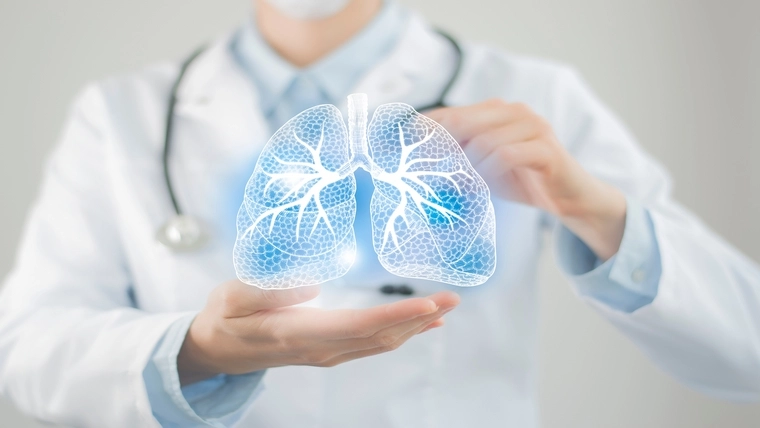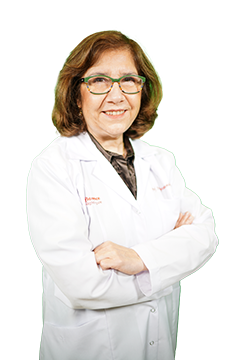
What is the Department of Pediatric Chest Diseases and What Diseases Does It Cover?
The department of pediatric chest diseases is a medical discipline that deals with the diagnosis and treatment of respiratory system diseases in children from infancy to the end of adolescence. In this department, diseases such as asthma, bronchitis, pneumonia, tuberculosis, which are common in children, as well as congenital or acquired lung diseases are examined and treated.
About the Department of Pediatric Chest Diseases
The pediatric chest diseases department is a critical medical discipline for the evaluation of symptomatology that can be referred to the chest region in children. In this department, a wide range of pathologies are evaluated and the anatomical classification of diseases is of great importance in the diagnosis and treatment processes. Chest diseases can be examined in three main sections: lung parenchyma, large airway abnormalities and pathologies occurring in the mediastinum. This department is an area where imaging methods are used, which play an important role in the detailed evaluation of the spread of the disease and the response to treatment, as well as in clinical evaluation. In the diagnosis and treatment of pediatric chest diseases, imaging methods provide important information about the degree of the disease, related abnormalities and treatment planning.
Who is a Pediatric Chest Diseases Specialist and What Are Their Duties?
A pediatric pulmonologist is a doctor who specializes in pediatric pulmonology, who diagnoses, treats and monitors diseases in the chest area of children. The duties of the specialist include evaluating symptoms related to the chest area of children, determining the location and spread of the disease, making the correct diagnosis using different imaging methods and determining the appropriate treatment methods accordingly. A pediatric pulmonologist makes a detailed assessment, especially in areas such as lung parenchyma, large airway abnormalities and mediastinal pathologies. In addition, monitoring the treatment process and updating the treatment plan according to the course of the disease are among the specialist's responsibilities. These specialists determine the most appropriate treatment approach by evaluating the advantages and disadvantages of different imaging methods according to the characteristics of the disease.
What Diseases Does Pediatric Chest Diseases Cover?
The pediatric chest diseases department covers a wide range of respiratory and chest diseases. These diseases usually develop due to pathologies in the lung parenchyma, large airways and mediastinal region.
Here are the main diseases covered by the pediatric chest diseases department:- Asthma: It is a chronic respiratory disease that is common in children and is characterized by narrowing of the airways.
- Bronchitis: It is a disease that occurs as a result of inflammation of the bronchi and manifests itself with cough and phlegm production.
- Pneumonia: An infection that causes inflammation of the lung tissue and can cause serious respiratory problems in children.
- Tuberculosis: It is an infectious disease caused by the bacteria Mycobacterium tuberculosis and can cause serious damage to the lungs.
- Cystic Fibrosis: A hereditary disease that causes increased mucus production and blockages in the airways. This can lead to chronic lung infections.
- Bronchiolitis: A viral infection characterized by inflammation of the small airways (bronchioles), especially seen in infants and young children.
- Mediastinal Tumors: These are benign or malignant tumors that occur in the mediastinum (the area in the middle of the chest cavity). These tumors may present with symptoms such as shortness of breath and chest pain.
- Foreign Body Aspiration: This is a condition that occurs when a foreign object gets stuck in the airways of children and requires immediate intervention.
- Chronic Cough: It is a long-lasting cough complaint that may occur due to various underlying causes.
- Pulmonary Dysplasia: It is a chronic lung disease that is seen especially in premature babies and requires long-term oxygen therapy.
The pediatric chest diseases department deals with the diagnosis, treatment and monitoring of these and similar diseases. Various imaging methods and tests are used to accurately classify diseases and create a treatment plan.
What are Pediatric Chest Diseases Examinations?
A pediatric chest examination may include different tests and examinations depending on the patient's complaints and general health status.
Commonly performed examinations:- Physical Examination: Chest auscultation, breath sound assessment, and oxygen saturation measurement.
- Respiratory Function Tests: Tests that measure lung capacity and the condition of the respiratory tract.
- Radiological Examinations: Imaging methods such as chest X-ray or computed tomography (CT).
- Blood Tests: To assess indicators of infection and oxygen carrying capacity.
What Methods Are Used in the Treatment of Pediatric Chest Diseases?
Treatment of pediatric chest diseases varies depending on the type and severity of the disease.
Commonly used treatment methods:- Medication: Medications such as antibiotics are used to treat infections and corticosteroids and bronchodilators are used to reduce inflammation.
- Physiotherapy: Exercises and techniques to clear the airways and improve lung function.
- Oxygen Therapy: Used as a supplement in patients with low oxygen saturation.
- Surgical Intervention: Surgery may be necessary to correct congenital abnormalities or to stop the progression of the disease.
When Should You Go to the Pediatric Chest Diseases Department?
If you observe symptoms such as recurring cough, shortness of breath, wheezing, chest pain or persistent respiratory tract infection in your child, it is important to consult a pediatric pulmonology department. In addition, this department should be consulted for children diagnosed with congenital lung diseases or suspected of such diseases.
What is Done During a Pediatric Chest Diseases Examination?
During a pediatric chest disease examination, the child's general health status and complaints are first listened to. Then, the diagnosis of the disease is attempted using the examination methods mentioned above. During the examination, parents are also included in the process so that the child is comfortable and not afraid. After the diagnosis is made, an appropriate treatment plan is determined and parents are given detailed information about this plan.

